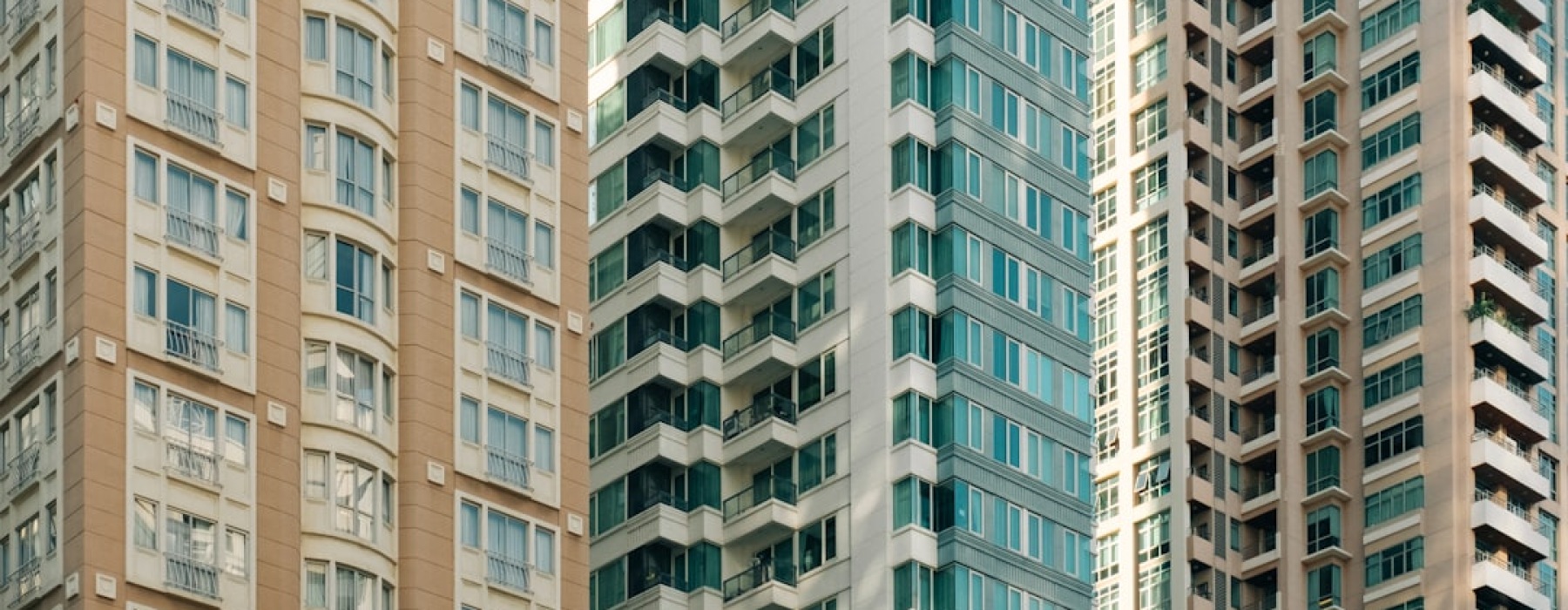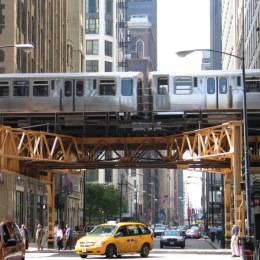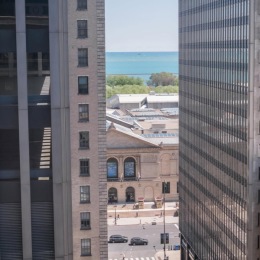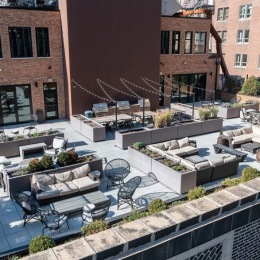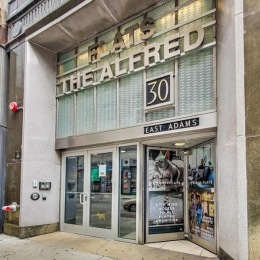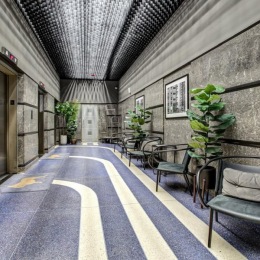Apartment Hunting in the Clouds – High-Rise Apartments Worth the Climb
Why High-Rise Apartments Define Modern Urban Living
High rise apartments are residential buildings that typically range from 7 to 40+ floors, offering city dwellers liftd living with panoramic views and premium amenities. Here's what defines them:
Key Characteristics:
- Height: 75+ feet (NFPA standard) or 7+ stories in the U.S.
- Toronto Definition: 11+ stories qualify as high-rise
- Features: Elevators, concierge services, rooftop amenities
- Types: Studios to penthouses with luxury finishes
- Average Rent: Around C$2,048/month for luxury units in Toronto
High-rise living has become synonymous with urban sophistication. These vertical communities offer more than just a place to live - they provide resort-style amenities, security, and connectivity that ground-level housing simply can't match.
The appeal goes beyond city views and doorman service. High-rise apartments maximize urban land use while offering residents access to fitness centers, rooftop pools, and co-working spaces all under one roof. For busy professionals, this means less time commuting to amenities and more time enjoying them.
However, high-rise living isn't for everyone. Elevator dependency, higher monthly fees, and stricter building rules are trade-offs worth considering. Fire safety becomes more complex, and pet policies tend to be more restrictive than in low-rise buildings.
Whether you're drawn to downtown convenience or penthouse prestige, understanding what makes high-rise apartments unique will help you decide if life in the clouds is right for you.
High Rise Apartments 101: Definitions, Types & Comparisons
The world of vertical living can be confusing when you're trying to understand what actually qualifies as a high rise apartment. Different cities, countries, and organizations use varying standards, which can make apartment hunting feel like decoding a puzzle.
The National Fire Protection Association (NFPA) sets the technical standard at 75 feet or higher, which typically translates to about 7 stories. This definition focuses on fire safety requirements - once a building reaches this height, fire truck ladders can't reach the upper floors, requiring specialized safety systems.
But definitions vary significantly by location. In Toronto, a high-rise residential building must be over 11 stories, while some U.S. cities consider buildings as low as 4 stories to be high-rise. The Yardi Matrix classifies high-rise communities as those with 10 or more stories.
Building Classification Breakdown:
- Low-rise: Up to 4 stories (often called garden-style)
- Mid-rise: 5-10 stories
- High-rise: 7+ stories (NFPA) or 11+ stories (Toronto)
- Skyscraper: 40-50+ stories
The density benefits of high-rise construction are significant. These buildings accommodate more residents per unit of land, which decreases the cost of municipal infrastructure like water, sewer, and electrical systems.
What counts as high rise apartments in Toronto & beyond
Toronto's definition of 11+ stories for high-rise classification reflects the city's aggressive vertical development strategy. The city has experienced a "golden age of high-rise construction," with cranes filling the cityscape as developers race to meet housing demand.
This 11-story threshold also aligns with Toronto's municipal definition that high-rise residential buildings must be "taller than they are wide." This ensures that these structures truly dominate their footprint and contribute to the city's distinctive skyline.
In Chicago, the zoning classifications are more flexible, but most luxury developments downtown easily exceed the 20-story mark. The city's architectural heritage means that many high-rise apartments blend historic facades with modern interiors.
Mid-rise vs high-rise apartments – key differences
The jump from mid-rise to high-rise living involves more than just additional floors. These differences impact everything from your daily routine to your monthly budget:
Elevator Dependency: Mid-rise buildings often allow residents to take stairs as an alternative, while high-rise living makes elevators essential. This means longer wait times during peak hours and potential inconvenience during maintenance.
Amenity Scale: High-rise buildings typically offer more extensive amenity packages. Where a mid-rise might have a small fitness room, high-rises often feature full-floor fitness clubs, multiple lounges, and specialized spaces like co-working areas.
Construction Timeline: High-rise projects typically take longer to complete than mid-rise developments - often exceeding three years not including planning and permitting phases.
Views and Privacy: The height advantage of high-rises provides unobstructed city views and greater privacy from street-level activity, though this comes with increased exposure to wind and weather.
Living in the Sky: Why High Rise Apartments Still Reign
There's something magical about stepping into your apartment and seeing the entire city spread out below you. High rise apartments continue to captivate urban dwellers not just for the views, but for the complete lifestyle change they offer.
Modern high-rise living has evolved into something far more sophisticated than simply stacking apartments vertically. These buildings have become self-contained communities where convenience meets luxury in ways that would make a five-star hotel jealous.
Advantages of high rise apartments
The panoramic city views are undeniably the star attraction. There's nothing quite like watching a thunderstorm roll across the skyline or seeing the city lights twinkle to life at dusk. These views create a sense of connection to the urban energy below while maintaining peaceful distance from street-level hustle.
Resort-style amenities have become standard in luxury high-rises. Picture finishing work, heading up to the rooftop pool for a swim while watching the sunset, then grabbing dinner from the building's private dining area. Some buildings even feature wellness amenities like yoga studios and spa services.
The transit proximity factor cannot be overstated. High-rise developments typically occupy prime urban locations with excellent public transportation access. This means shorter commutes, reduced car dependency, and more time for the things that actually matter.
Community events and social opportunities flourish in high-rise settings. From wine tastings in the sky lounge to fitness classes with city views, these buildings foster connections that can be hard to find in traditional housing.
Advanced safety technology provides peace of mind that goes beyond traditional security measures. Modern high-rises feature 24/7 concierge services, controlled access systems, comprehensive camera networks, and sophisticated fire safety systems.
The eco-friendly design elements in newer high-rises often exceed environmental standards found in older housing stock. Energy-efficient windows, advanced HVAC systems, and green building certifications mean lower utility costs and reduced environmental impact.
Challenges to keep in mind
Elevator dependency is the reality check that comes with vertical living. When elevators are out for maintenance, climbing 20+ flights isn't exactly fun. During peak hours, you might find yourself waiting longer than expected.
Higher monthly costs extend beyond rent. Building amenities, parking fees, and maintenance costs can add significant amounts to your housing budget. While these fees cover valuable services, they're worth factoring into your overall financial planning.
Wind and weather exposure becomes more noticeable as you go higher. Upper floors experience more wind noise, and some buildings have a subtle sway during storms that takes getting used to.
Complex evacuation procedures require more thought and preparation than traditional housing. Fire safety for high-rise dwellers involves understanding multiple escape routes and procedures.
Pet policies tend to be more restrictive in high-rise buildings. Size limits, breed restrictions, and additional deposits are common. The logistics of pet care require more planning when you're dozens of floors up.
The trade-offs are real, but for many urban dwellers, the benefits of high rise apartments far outweigh the challenges.
High-Rise Apartments Worth the Climb: Neighborhood Roundup & Pricing
Finding the perfect high rise apartment means understanding how location dramatically impacts both lifestyle and budget. The luxury market offers incredible variety, from busy business districts to serene lakefront communities, each with its own personality and perks.
When apartment hunting, remember to factor in the total monthly cost beyond base rent. Many luxury high rise apartments bundle utilities, cable, and even some amenity access into the rental price. Others charge separately for parking, fitness center access, or premium services.
The penthouse lifestyle represents the ultimate in vertical living, offering private terraces, premium finishes, and often dedicated elevator access. These top-floor units command premium prices but deliver privacy and spectacular views.
High Rise Apartments in the Chicago Loop
The Loop pulses with energy as Chicago's beating business heart, where living means stepping out your front door into the city's most dynamic neighborhood. Residents of Chicago Loop High Rise Apartments often find that their morning commute involves nothing more than an elevator ride and a short walk.
The iconic towers here blend Chicago's legendary architecture with cutting-edge amenities. You'll find buildings where historic limestone facades hide smart home technology and rooftop pools with skyline views.
Walk-to-work convenience transforms daily life in ways you might not expect. Without commute stress, residents find extra time for morning workouts or evening strolls through Millennium Park. The proximity to world-class museums, theaters, and restaurants means cultural experiences happen spontaneously.
High Rise Apartments in Lakeview Chicago
Lakeview offers a completely different flavor of vertical living, where High Rise Apartments in Lakeview Chicago provide lakefront lifestyle with a neighborhood feel. The area's boutique towers create intimate communities while delivering the amenities and views that make high-rise living special.
Lakefront lifestyle means waking up to water views and having Lincoln Park Zoo as your backyard. The neighborhood's numerous dog parks and lakefront trails make it a paradise for pet owners who want urban convenience without sacrificing outdoor recreation.
The dining scene feels authentically neighborhood-focused, with local cafes where baristas know your order and breweries that become weekend hangouts. This village-within-the-city atmosphere appeals to residents who want high-rise amenities without the impersonal feel of massive downtown developments.
Downtown Toronto Sky-Homes
Toronto's downtown core showcases some of North America's most ambitious high-rise developments, particularly in the Entertainment District and along the Harbourfront. These areas represent the pinnacle of vertical community living.
The Entertainment District puts residents steps away from major sports venues, theaters, and concert halls. Living here means catching Blue Jays games on a whim or grabbing last-minute theater tickets without worrying about transportation home.
Harbourfront developments offer water views and recreational opportunities that make the city feel like a resort destination. Many buildings feature amenities that take advantage of the waterfront location, including private boat slips and waterfront terraces.
Spotlight: The Alfred's Restored Grandeur
The Alfred represents something truly special in Chicago's high-rise landscape - a building where historic architecture meets modern luxury without compromising either element. Our restoration process preserved the soul of the original structure while incorporating every convenience today's residents expect.
Historic details throughout the building tell Chicago's architectural story. Original moldings, restored tile work, and period-appropriate fixtures create an atmosphere that feels both timeless and sophisticated.
Our Amenities seamlessly blend old and new, with smart home technology integrated throughout the building in ways that complement rather than compete with the historic architecture. Residents control lighting, temperature, and security through mobile apps while enjoying the craftsmanship of Chicago's golden architectural age.
Renting vs Owning Above the Clouds
The decision between renting and buying a high-rise apartment involves complex financial considerations that extend beyond simple monthly payment comparisons. The 30% rule - keeping housing costs under 30% of pre-tax income - becomes particularly important when evaluating high-rise options due to additional fees and charges.
Renting offers flexibility and predictable monthly costs, while ownership provides equity building and potential tax benefits. However, high-rise ownership often involves significant monthly maintenance fees that can rival rent payments in some markets.
Renting high rise apartments – step-by-step
The rental application process for high-rise apartments typically involves more extensive screening than low-rise properties. Buildings with premium amenities and services want to ensure residents can afford the lifestyle and will contribute positively to the community.
Application Requirements:
- Proof of income (typically 2.5-3x monthly rent)
- Credit score verification (usually 650+ for luxury buildings)
- Employment verification and references
- Security deposit and first month's rent
We recommend scheduling a tour through our Schedule a Tour service to experience the building and amenities firsthand. This allows you to evaluate factors like elevator wait times, noise levels, and overall building atmosphere.
Background checks for high-rise apartments often include criminal history, eviction records, and previous landlord references. The process typically takes 2-5 business days, and having all documentation prepared can expedite approval.
Tips for Success:
- Prepare all financial documents in advance
- Be ready to make quick decisions in competitive markets
- Understand all fees beyond base rent
- Review lease terms carefully, especially regarding amenity usage
Buying a condo in the sky – what to expect
High-rise condo ownership involves unique considerations that don't apply to traditional home purchases. Monthly maintenance fees can range from several hundred to over a thousand dollars, covering building amenities, staff salaries, and major maintenance reserves.
Pre-construction purchases are common in high-rise developments, allowing buyers to customize finishes and secure lower prices. However, construction delays are frequent, and buyers must be prepared for extended timelines and potential cost overruns.
Ownership Costs Beyond Purchase Price:
- Monthly maintenance fees
- Property taxes
- Insurance (often higher for high-rise units)
- Parking fees
- Storage unit rental
- Special assessments for major building improvements
The investment outlook for high-rise condos varies by market. In established urban centers, these properties often appreciate well due to limited land availability and continued demand for city living.
Safety, security & maintenance considerations
High-rise buildings require sophisticated safety and security systems that go far beyond what's needed in low-rise properties. Modern buildings typically feature 24/7 concierge services, comprehensive camera networks, and controlled access systems that track entry and exit.
Security Features:
- Mobile app-controlled building access
- Video intercom systems for visitor management
- Elevator access restrictions by floor
- Package concierge services with secure storage
- 24-hour emergency response protocols
Maintenance in high-rise buildings involves specialized considerations like window washing with harnessed workers, elevator servicing, and water system leak prevention that can affect multiple floors. Preventive maintenance schedules are crucial for avoiding costly emergency repairs.
Fire safety systems include sprinkler networks throughout the building, pressurized stairwells to prevent smoke infiltration, and emergency communication systems. Residents should familiarize themselves with evacuation procedures and participate in building safety drills.
What's Next? Trends Shaping Future High-Rise Living
The world of high rise apartments is changing fast, and it's exciting to watch. Buildings are no longer just places to sleep - they're becoming complete lifestyle hubs that adapt to how we actually want to live.

The biggest shift we're seeing is how technology and sustainability are becoming must-haves rather than nice-to-haves. Remote work has changed everything - residents want buildings that work as hard as they do, with spaces that flow seamlessly between living, working, and relaxing.
Modern developments are embracing smart building features like mobile entry systems and gigabit internet that actually works when you need it most. The environmental piece is huge too. LEED certification is becoming the standard because residents care about their impact and want lower utility bills.
Tech-powered high rise apartments
Walking into a modern high rise apartment building feels like stepping into the future, but in a good way - not the overwhelming, buttons-everywhere kind of future.
Mobile entry systems mean you'll never get locked out again (as long as your phone has battery). You can buzz in your grocery delivery from across town or let your friend up while you're still in the shower.
Inside your unit, smart thermostats learn your schedule so you're not heating an empty apartment all day. Package lockers text you when your order arrives, so you don't have to hover by the lobby waiting for deliveries.
Gigabit internet throughout the building means your video calls won't freeze when your neighbor starts streaming. Touchless elevator controls became popular for obvious reasons, but they're staying because they just make sense.
The coolest part? Co-working spaces built right into residential buildings. You get all the perks of a professional office without leaving home. It's perfect for those days when your kitchen table just isn't cutting it as a desk.
Sustainable vertical communities
The green building movement has moved way beyond just recycling bins in the lobby. Today's high rise apartments are designed to be energy efficient from the ground up, and residents are loving the lower utility bills that come with it.
Solar panels are showing up on rooftops and even building facades, turning every surface into an opportunity to generate clean energy. Energy-efficient windows are a game-changer - they keep your apartment comfortable year-round while cutting heating and cooling costs dramatically.
Electric vehicle charging stations are becoming standard in parking garages because developers know residents want to make sustainable choices. Some buildings are even offering preferred parking spots for electric vehicles.
The materials going into these buildings are changing too. Recycled steel, reclaimed wood, and low-emission concrete create unique design elements while reducing environmental impact.
Water conservation features like low-flow fixtures work quietly in the background, reducing waste without affecting your daily routine. These sustainable features aren't just good for the planet - they're creating healthier, more comfortable living spaces that cost less to maintain.
Frequently Asked Questions about High Rise Apartments
Living in the clouds comes with questions - and we get them all the time! Whether you're considering your first high rise apartment or you're a seasoned vertical dweller, these are the most common concerns we hear from prospective residents.
How many floors make a building a high-rise?
This question seems simple, but the answer depends on where you live and who's doing the defining. The National Fire Protection Association (NFPA) sets the technical standard at buildings with occupiable floors more than 75 feet above fire department access level - which typically translates to about 7 stories.
But here's where it gets interesting: Toronto requires 11+ stories before they'll call your building a high-rise, while some U.S. cities consider buildings as low as 4 stories to qualify. The difference often comes down to fire safety requirements rather than just counting floors.
The key factor is really about emergency response capabilities. Once fire truck ladders can't reach your windows, the building needs specialized safety systems like comprehensive sprinkler networks and pressurized stairwells. That's when you've officially entered high-rise territory.
Do high rise apartments cost more to insure?
Yes, high rise apartments typically come with higher insurance costs than ground-level units. The reasons make sense when you think about it - replacement costs are higher, fire safety requirements are more complex, and upper floors face greater weather exposure.
However, there's a silver lining that many people don't realize. Most high-rise buildings carry comprehensive master insurance policies that cover common areas, building structure, and sometimes even certain interior elements. This can actually reduce what you need to cover with your individual renter's or condo insurance.
The key is working with insurance providers who understand high-rise properties. They can help you avoid paying for coverage you don't need while ensuring you're protected where it matters most. Don't assume your rates will be sky-high just because your apartment is!
Which floor is best for noise, light and energy bills?
The middle floors - roughly floors 7 through 15 in taller buildings - often hit the sweet spot for balancing all your concerns. These floors give you the best of both worlds without the extreme trade-offs of very low or very high floors.
Middle floors typically offer reduced street noise compared to lower levels, better natural light than ground-level units, less wind exposure than top floors, and moderate energy costs since you're not dealing with the heating and cooling extremes.
That said, the "best" floor really depends on your priorities. Higher floors provide those Instagram-worthy city views but come with increased wind exposure and potentially higher utility bills. Lower floors offer convenience - no long elevator waits when you're carrying groceries - but you'll hear more street activity.
Top floors can be amazing for views and privacy, but they often face higher heating and cooling costs due to weather exposure. Plus, building sway during storms is more noticeable the higher you go, though modern engineering ensures everything stays perfectly safe.
The truth is, each floor range has its fans. Some people love being close to the action on lower floors, while others wouldn't trade their penthouse views for anything. Consider what matters most to you - convenience, views, quiet, or cost - and choose accordingly.
Conclusion
Living in high rise apartments is about more than just having a fancy address - it's about choosing a lifestyle that puts everything you need right at your fingertips. From waking up to stunning city views to having a fitness center just an elevator ride away, these vertical communities offer a way of living that's hard to beat.
The appeal is clear: doorman service when you need it, resort-style amenities without leaving home, and the kind of urban connectivity that makes commuting a breeze. Whether you're drawn to the sleek technology of modern towers or the character of beautifully restored buildings, high-rise living offers something special for everyone.
Of course, it's not all sunshine and rooftop pools. The elevator dependency is real, and those monthly fees can add up. Building rules might be stricter than what you're used to, and moving day becomes a whole production when you're 20 floors up. But for many people, these trade-offs are worth it for the convenience and community that high-rise living provides.
The future looks exciting too. Smart building technology is making life easier, while sustainable features are making these communities more environmentally friendly. As cities keep growing upward, these buildings are becoming the backbone of urban living.
Looking ahead, high-rise developments are getting smarter about what residents actually want. Think co-working spaces for remote work days, wellness amenities that rival expensive spas, and community events that help you actually get to know your neighbors.
If you're considering making the move to high-rise living, we'd love to show you what makes our community special. Check out our Luxury Apartments for Rent to see how The Alfred Apartments by Flats® combines the best of Chicago's architectural history with all the modern conveniences you could want.
Sometimes the best way to experience a city is from above it all. And honestly, once you've lived in the clouds, it's pretty hard to come back down to earth.
